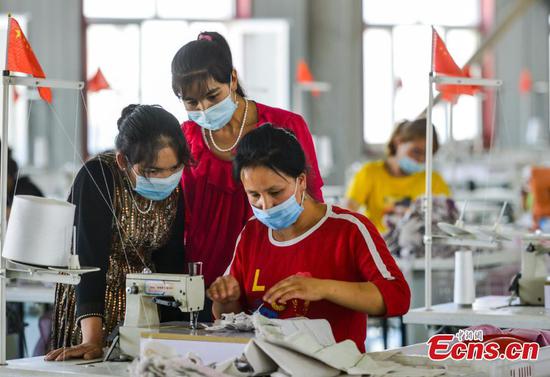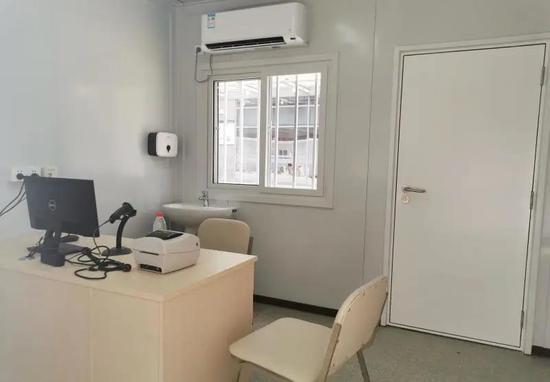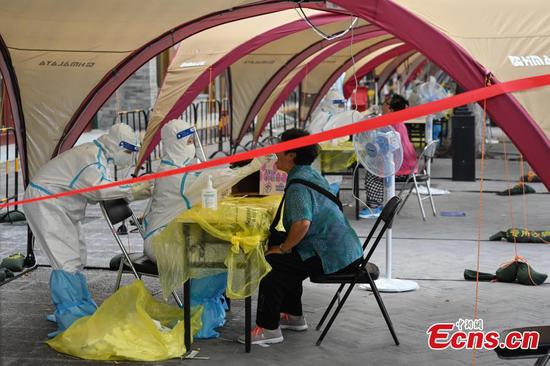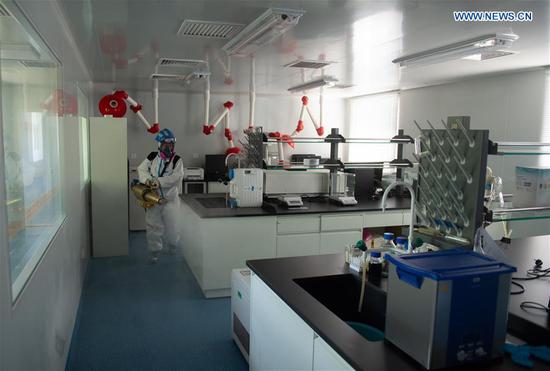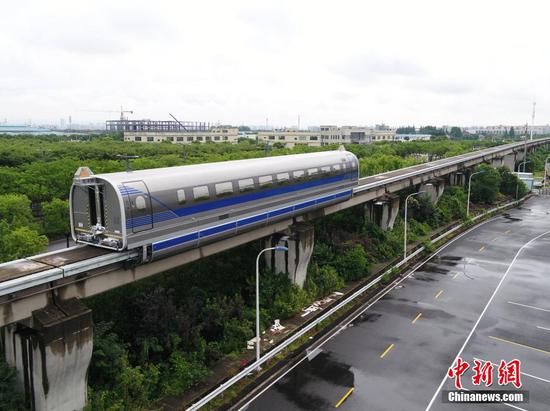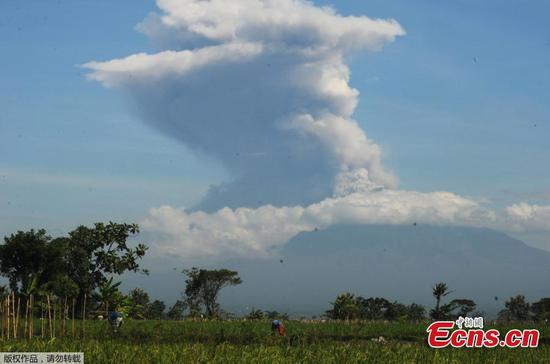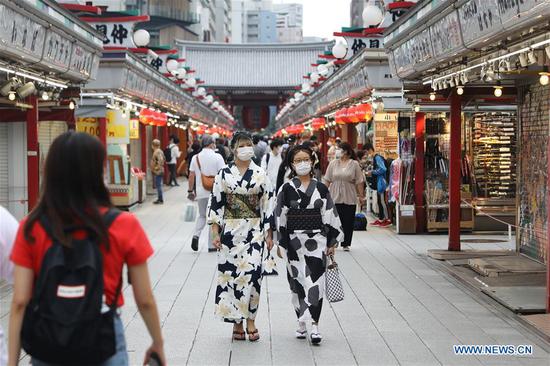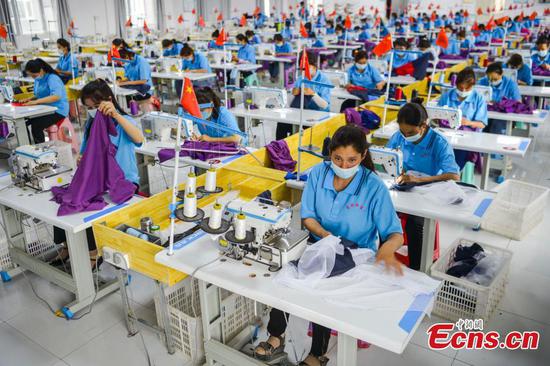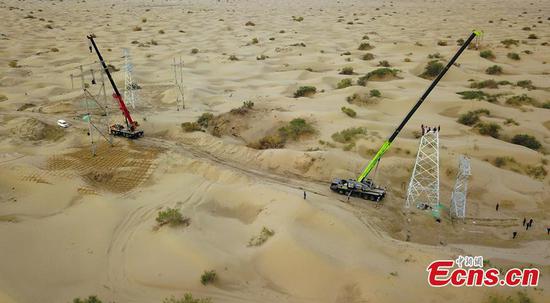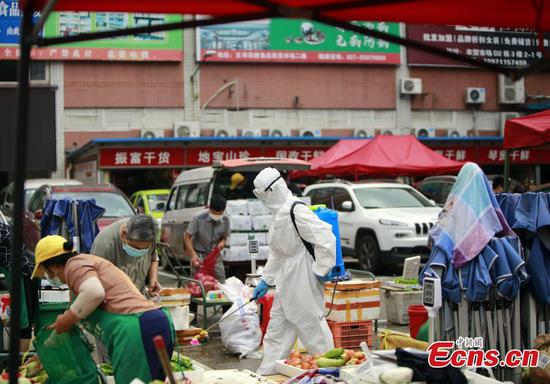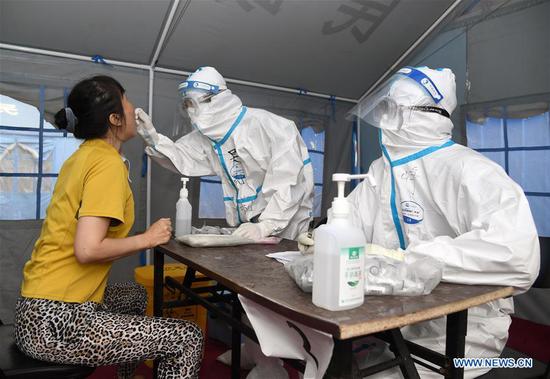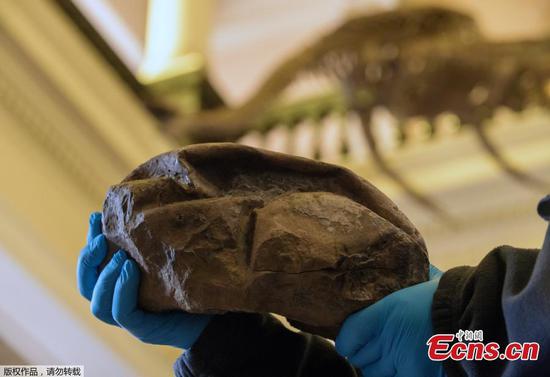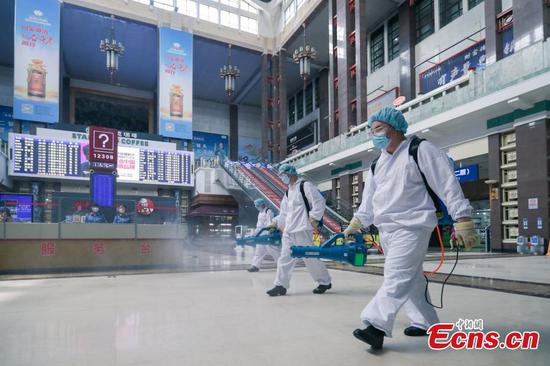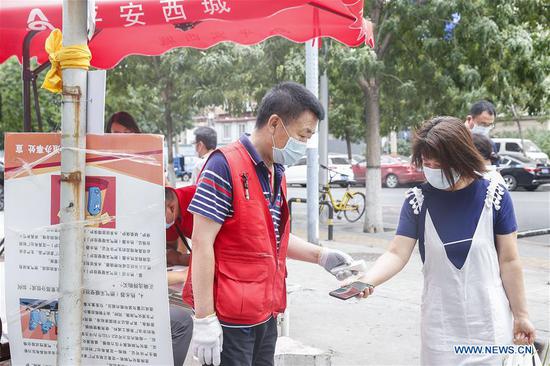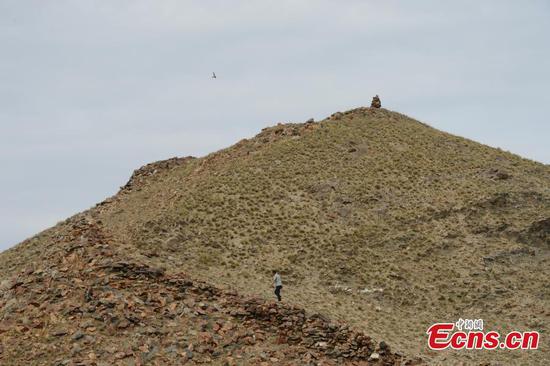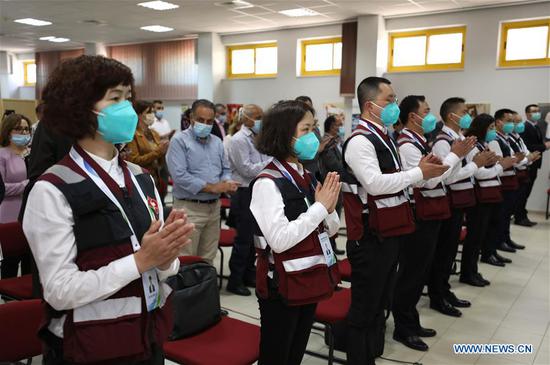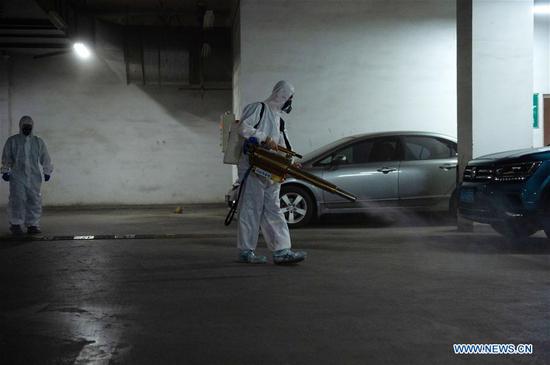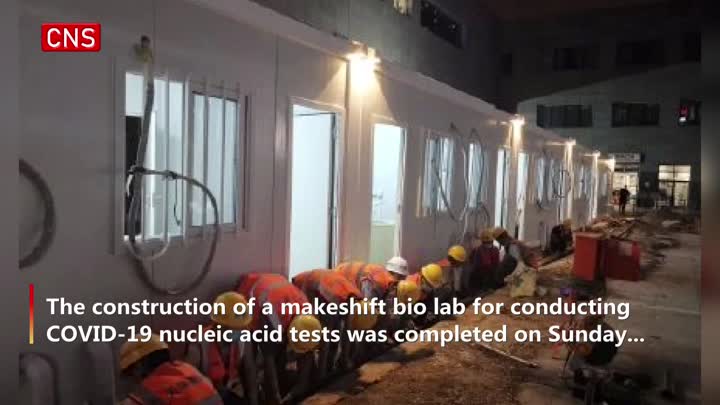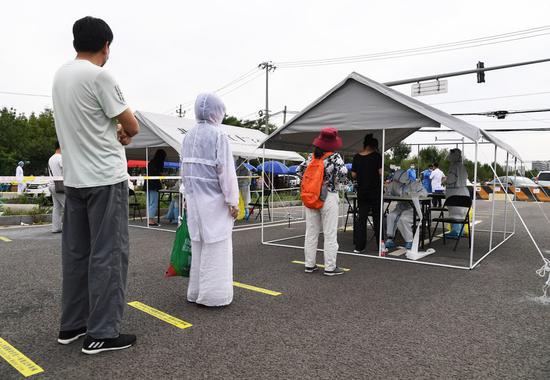
People queue up to receive test at a temporary nucleic acid testing site in Fengtai District of Beijing, capital of China, June 15, 2020. (Xinhua/Ren Chao)
The capital city of Beijing has adopted a more targeted approach to tackle the resurgence of the novel coronavirus outbreak in order to balance epidemic containment with normalization of life.
From June 11 to 21, Beijing reported 236 confirmed domestically-transmitted cases. Starting June 16, the national capital city upgraded the posture of emergency response to COVID-19 from level III to II.
Instead of classifying the COVID-19 risk based on districts, Beijing categorized the risks in subdistricts and townships and accordingly adjusted the classification. A subdistrict is an urban administrative division one level lower than a district and consists of several residential communities or neighborhoods. Beijing has more than 300 subdistricts and townships.
As of 3:00 p.m. Sunday, the city had listed 37 subdistricts and townships as medium-risk zones and four as high-risk ones.
RAISING THE GUARD
Most of the latest COVID-19 cases reported in Beijing were related to Xinfadi, a large wholesale market for fruits, vegetables, and meat catering to the demand of the national capital city of more than 21 million.
To contain the spread of the disease, Beijing has been undertaking extensive testing of people who had been to the market, and implemented strict community control measures in surrounding areas.
Since June 13, people working in the market, residents of nearby communities, and people who visited the facility have been identified to undergo nucleic acid tests.
In the Xincun neighborhood of Huaxiang Township, the first area to be classified as high-risk in this outbreak, health authorities set up a temporary nucleic acid sampling station along a closed road section overnight on June 14.
Residential communities identified people who had been to the market or their close contacts to take designated buses to the site for undergoing tests and returning home, according to Guo Qiang, head of the Xincun community health service center.
Beijing has launched a citywide campaign to trace people who visited the market since May 30 via door-to-door inquiries, calls, social media platforms, and other methods.
As of Saturday, nearly 2.3 million people in the city had been sampled for nucleic acid tests, according to local authorities.
The city has also prioritized testing for employees of restaurants, grocery stores, wholesale markets, and courier and food delivery, according to the municipal government.
To cope with the surging demand for tests, Beijing more than doubled its daily nucleic acid testing capacity in a few days, bringing it to 230,000 from 100,000 as of Saturday.
MITIGATING IMPACTS
China's State Council on April 22 called for adjusting and optimizing standards for classifying epidemic risks to reflect threat levels in a more targeted way and adapt to the demands of regular epidemic prevention and control.
Risk levels affect the control measures applied to business operations and the flow of people. For example, those from medium- and high-risk areas are not allowed to leave Beijing.
Supermonkey, a gym chain, had suspended operations at an outlet in Xicheng District, where the outbreak was more severe, while keeping four stores in Chaoyang District open as of Saturday.
Sessions at some of the gym's outlets were fully booked Saturday.
In another gym chain, Keepland, in Shuangjing of Chaoyang District, classes were held as usual Friday, as students were reminded to keep one-meter distance, take their temperatures, and register personal information.
"This outbreak did not affect our businesses much," said Fang Fang, who works at a beauty salon in the Fangzhuang residential community in southern Beijing, a low-risk area.
The salon recently received a steady number of around 40 people daily and Fang served five customers Friday, a good footfall for a weekday, she said.
Like in other stores, customers follow a strict procedure of taking temperatures, showing health codes on their phones, and filling up necessary contact information. Disinfectants are placed right near the entrance.
"The situation now is better than in the first quarter, when the novel coronavirus epidemic first began," Fang said. "And we have also gotten used to regularly disinfecting the area multiple times daily."











